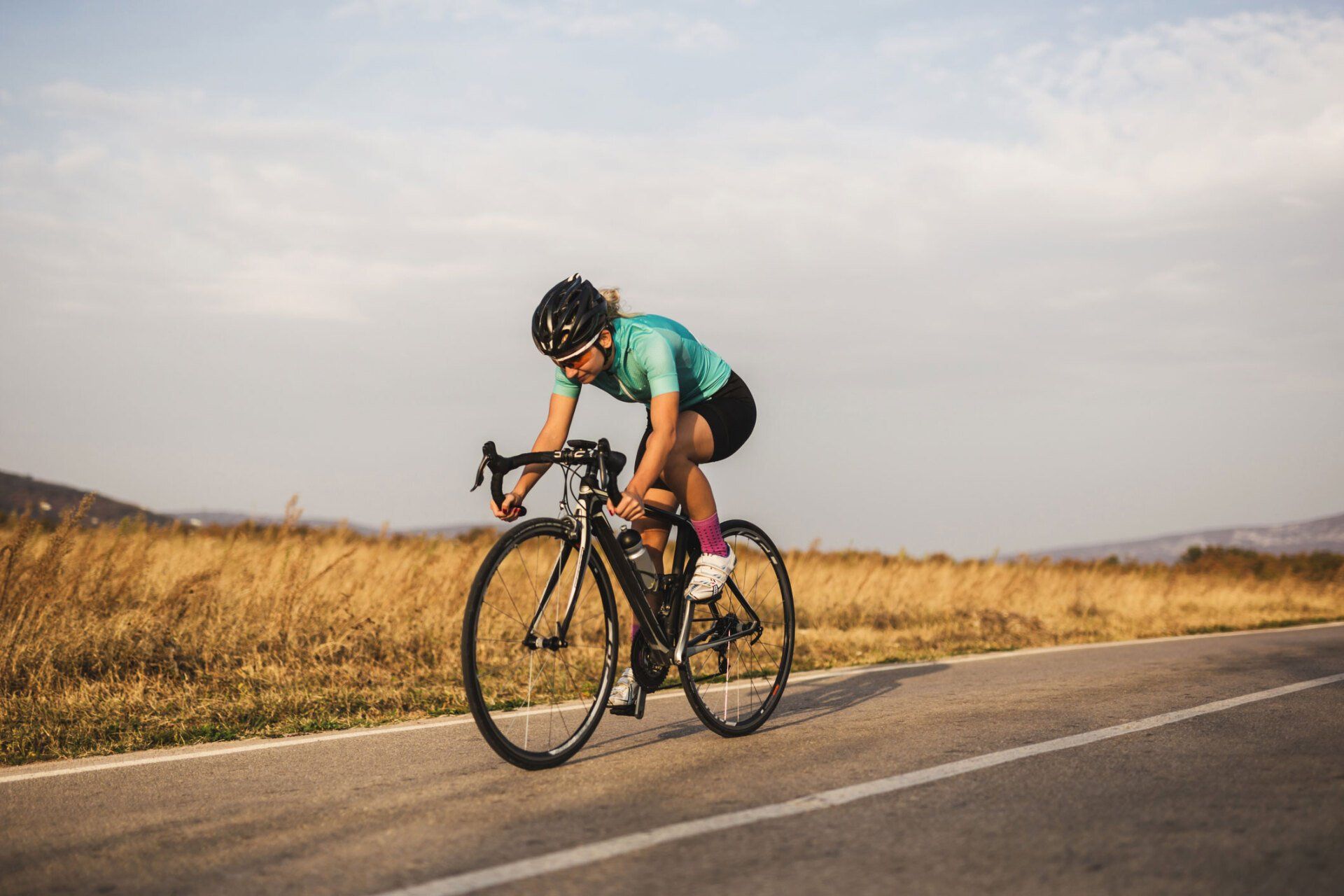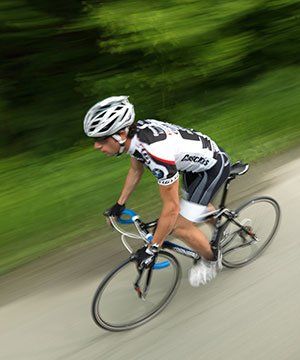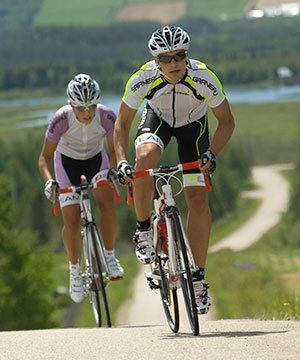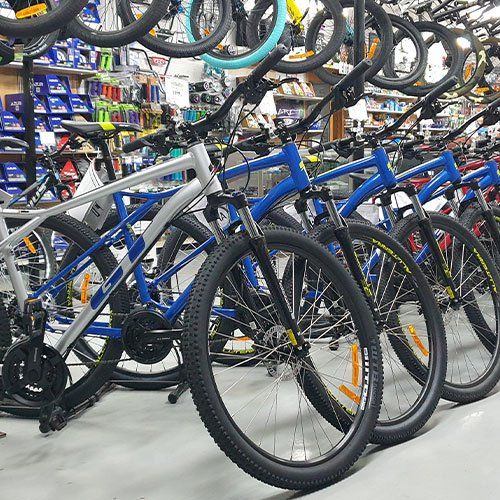Road Recreational & Racing Bikes
Which Road Bike is right for me? This can sometimes be a very hard question to answer. Here at Marshall's Cycles, we can help you choose a bike that will suit your riding needs.
We have put together this information on the different types of Road bikes available on the market today. Yes! It can all be very confusing…If you need any questions answered you can send us an email, call on (03) 5278 3839 or simply drop into the store for a chat.
A road bicycle is a synonym for the term racing bicycle. As such, road bicycles have drop handlebars and multiple gears, although there are single and fixed gear varieties. Road bikes also use narrow, high-pressure tyres to decrease rolling resistance, and tend to be somewhat lighter than other types of bicycles. It a bicycle designed for use primarily on paved roads, as opposed to off-road terrain.
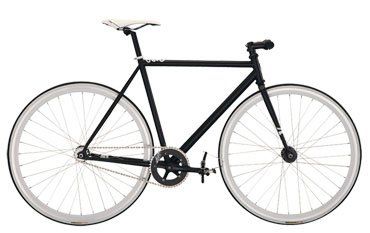

Racing Bicycle
A racing bicycle, commonly known as a road bike, is a bicycle designed for road cycling according to the rules of the Union Cyclist Internationale (UCI).
The most important characteristics about a racing bicycle are its weight and stiffness which determine the efficiency at which the power from a rider's pedal strokes can be transferred via its drive train and to its wheels. To this effect racing bicycles may sacrifice comfort for speed.
The drop handlebars are positioned lower than the saddle to put the rider in a more aerodynamic posture. The front and back wheels are close together, so the bicycle has quick handling. The derailleur gear ratios are closely spaced so that the rider can pedal at his or her optimum cadence. Other racing bicycles, especially those used in time trialling prioritize aerodynamics over comfort.
Racing Wheels and Tyres
The wheels greatly affect the performance of a racing bike. The rim of the wheel can be shaped for greater aerodynamic efficiency making a triangular cross-section to form a teardrop with the tyre.
For aerodynamics and rotating weight, it is generally better to reduce the number of spokes in the wheel. For high-end wheelsets, the spokes can be shaped to have a bladed cross-section, further reducing wind resistance.
The most common material for a wheel rim is aluminium. Using a moulded carbon fibre rim reduces weight compared to an aluminium rim. Using exotic materials, race-grade wheelsets are very expensive. Riders who race often choose to own at least two pairs of wheels: a heavier, more durable, and cheaper wheelset for training, and a lighter, more aerodynamic wheelset for racing.
To reduce both air resistance and rolling resistance on the road, tyres are lightweight, narrow, and have a thin, smooth tread. They are inflated to a high pressure, typically around 120psi; track racing tyres can be inflated up to circa 220psi.
Racing Components
Race bike components excluding frame, fork, wheelset, bars, stem, pedals, saddle and seat post) are collectively referred to as the group set. The quality of the group set determines how refined the bike feels, how much maintenance it requires, and contributes to the performance of the bike. The three major group set manufacturers of complete group sets for racing bicycles are Shimano, Sram and Campagnolo. In 2006 SRAM introduced their Force and Rival racing group sets. The companies have different design philosophies, and some cyclists have great brand loyalty for one or the other.
In the early 1990s, Shimano introduced dual control with a system called Shimano Total Integration (STI). STI is characterized by its combined brake and shift levers. Previously, the shifters were mounted on the stem, handlebar ends or the down tube of the frame. Dual control addressed the problem of having to reposition a hand to change gears. STI was followed by the competing Campagnolo/Sachs Ergo lever. Other than this, the general design of a racing bicycle has changed little since the development of derailleurs.
The road group set levels that these companies offer are as follows, from highest to lowest level. The number in the brackets indicates the number of cogs on the cassette. Shimano: Dura-Ace (10s), Ultegra SL (10s), Ultegra (10s), 105 (10s), Tiagra (9s), SORA (9s), 2300 (8s). Campagnolo: Super Record (11s), Record (11s), Chorus (11s), Centaur (10s), Veloce (10s), Mirage (10s), Xenon (10s). SRAM: Red (10s), Force (10s), Rival (10s).
In early March 2006, some pro riders were seen riding with Shimano electronic shifting group sets; further testing in the pro-ranks continued during the next 2 years. Recently, Shimano have announced that their 2009 Dura-Ace group set will include both manual and electronic shifting options.
Carbon fibre has also become more popular for components. Campagnolo and SRAM have introduced carbon fibre for their high-end shifters and brake levers, cranks, and parts of their derailleurs. Carbon fibre stems, handlebars, shoe soles, forks and seat posts are also more commonplace, including integrated stem/handlebar combinations. The advantages of carbon fibre are low weight as well as increased vibration dampening leading to a more comfortable ride.
Recreational Road
For recreational road cycling, the racing bicycle is very popular (aka training bike, a slightly heavier and less expensive version of the road racing bike), such bicycles, having drop handlebars and other superficial resemblances, are sometimes called "racing bikes".
Mountain bikes also work on roads, and in their mass produced basic entry-level form tend to be less expensive than road racing bikes. An entry-level mountain bike starts around half the price of an entry-level road racing bike.
Road bicycles including racing bikes are more efficient for use on smooth roads.



